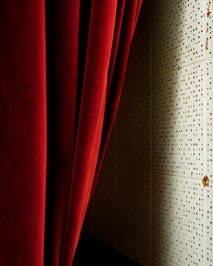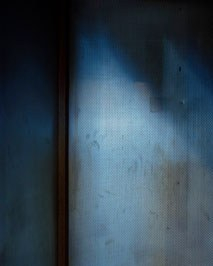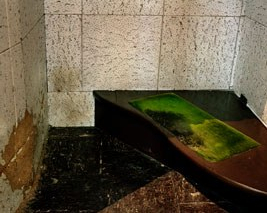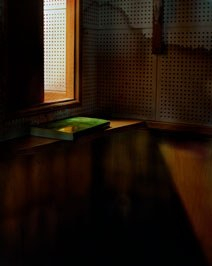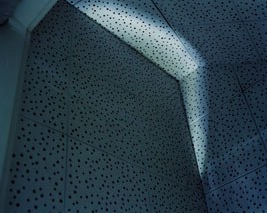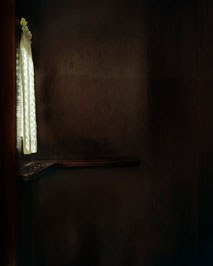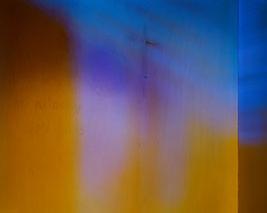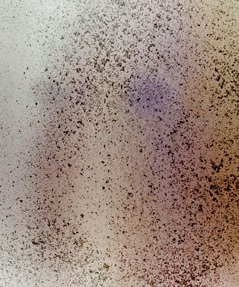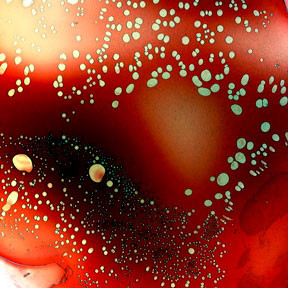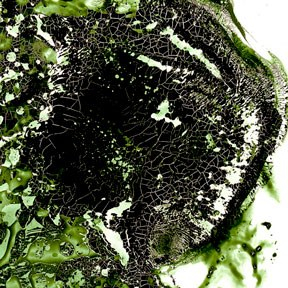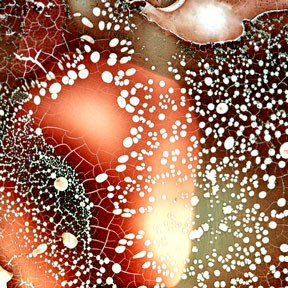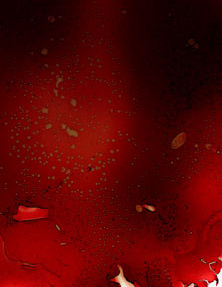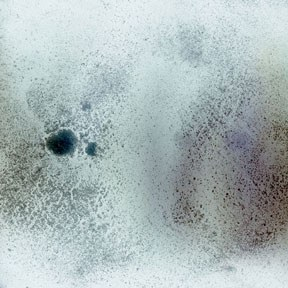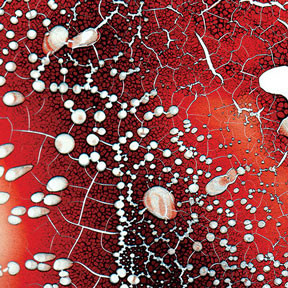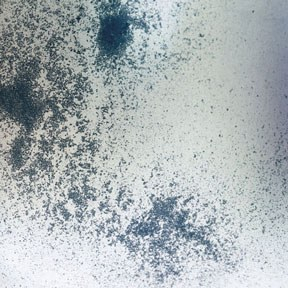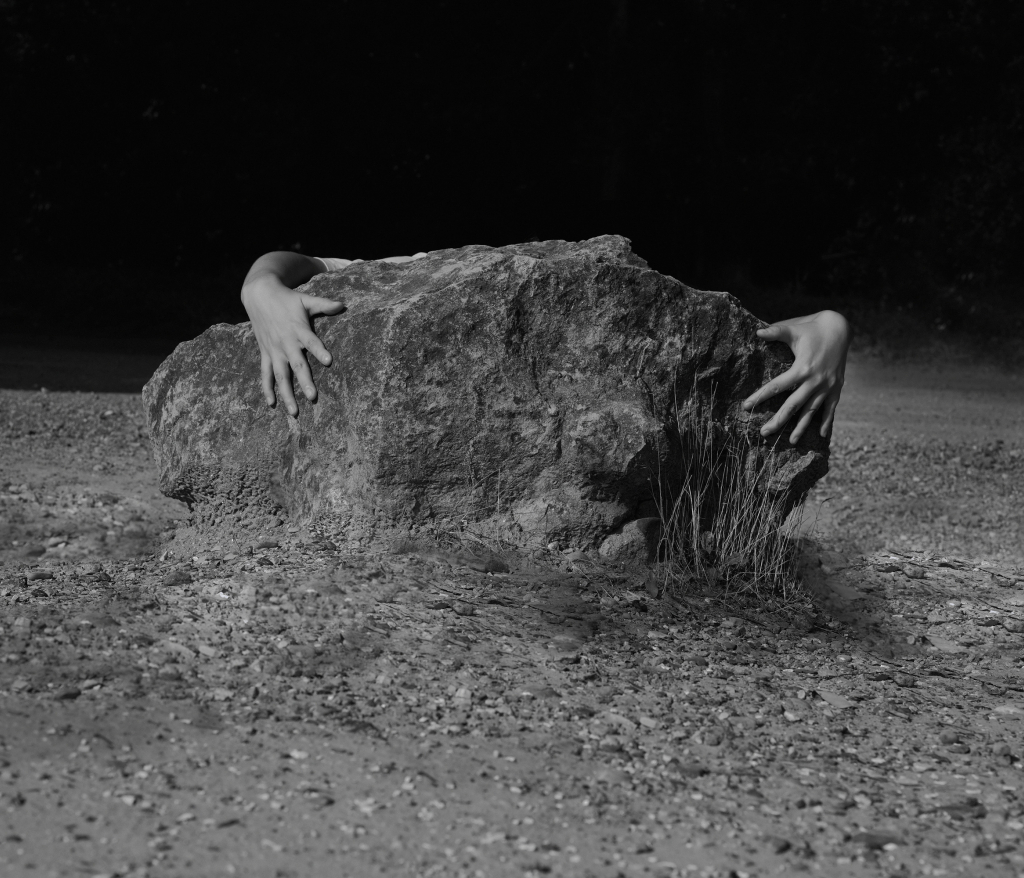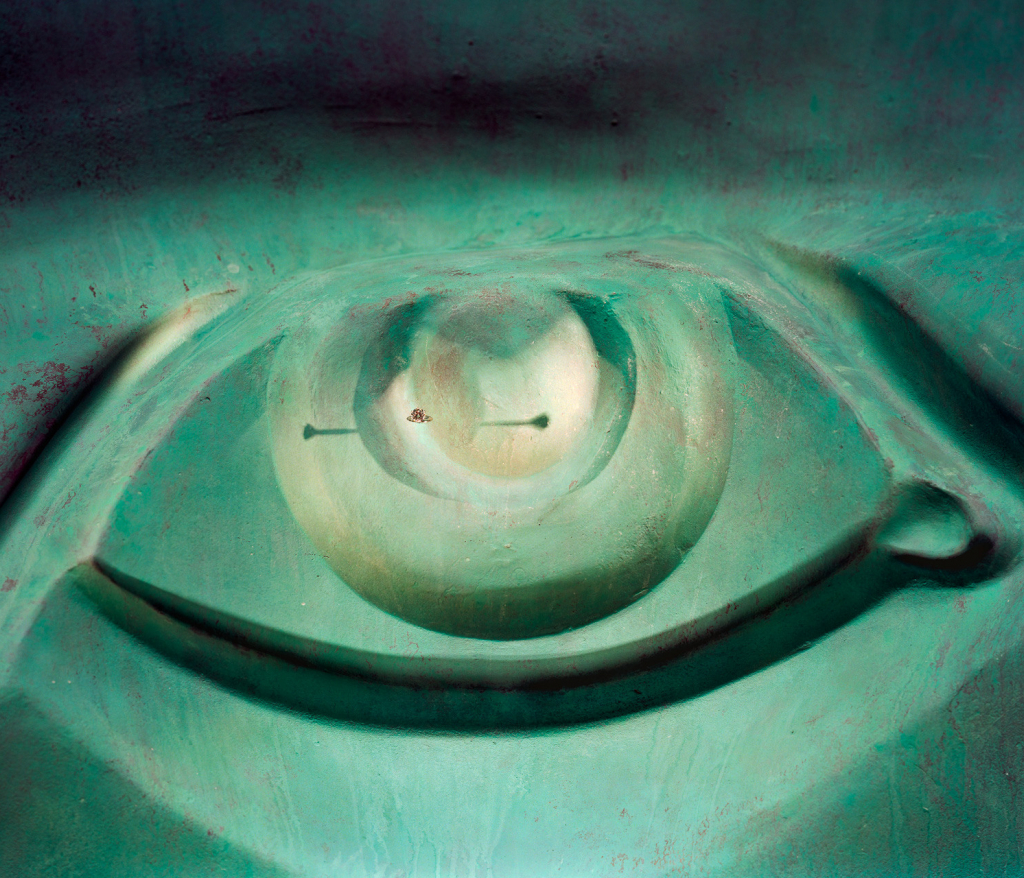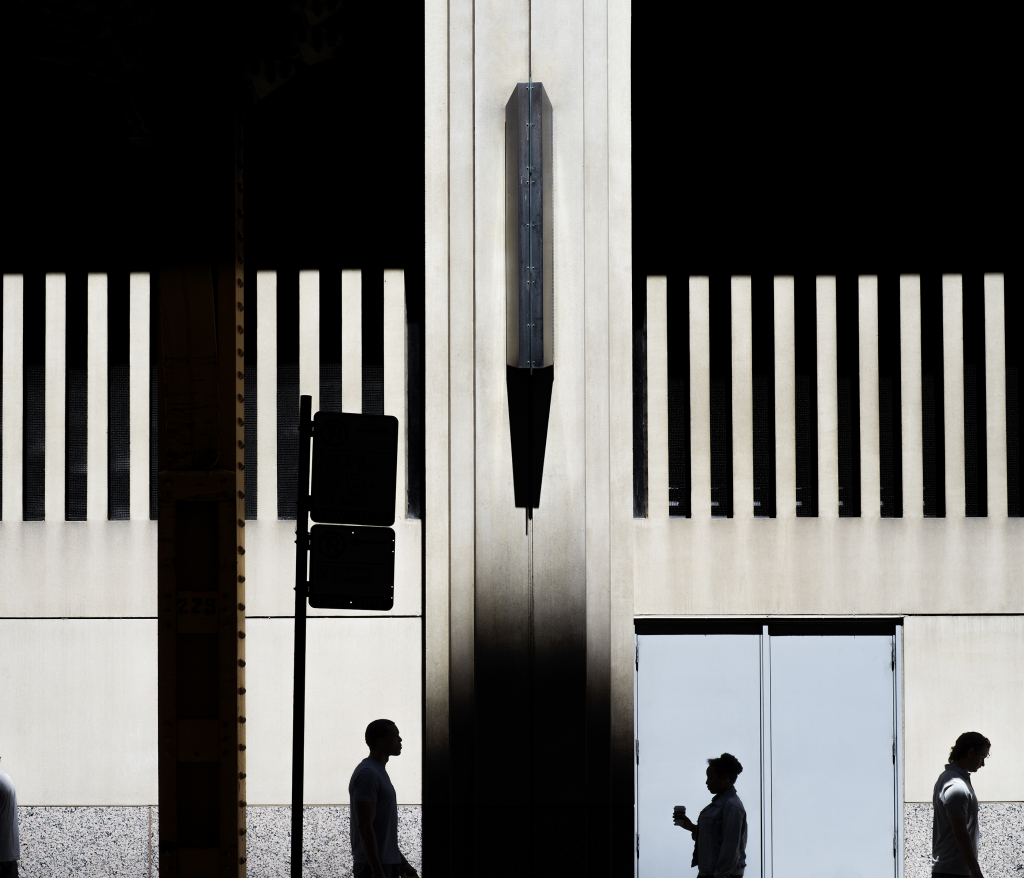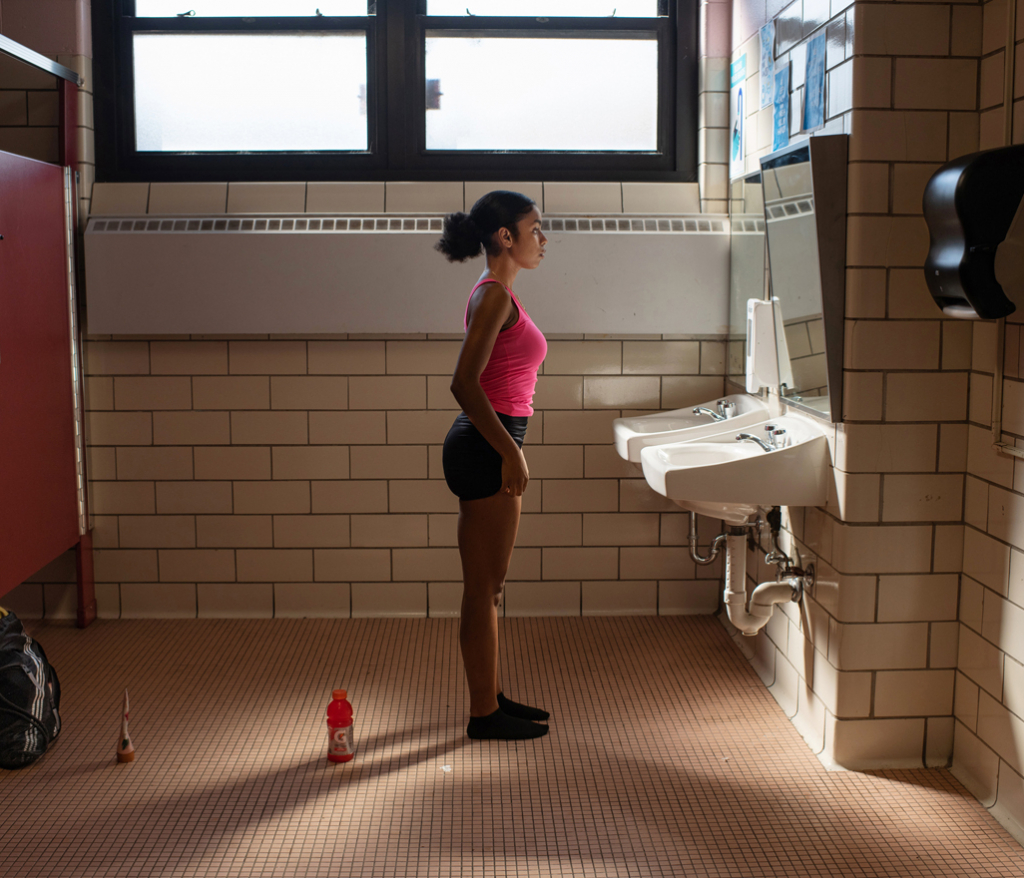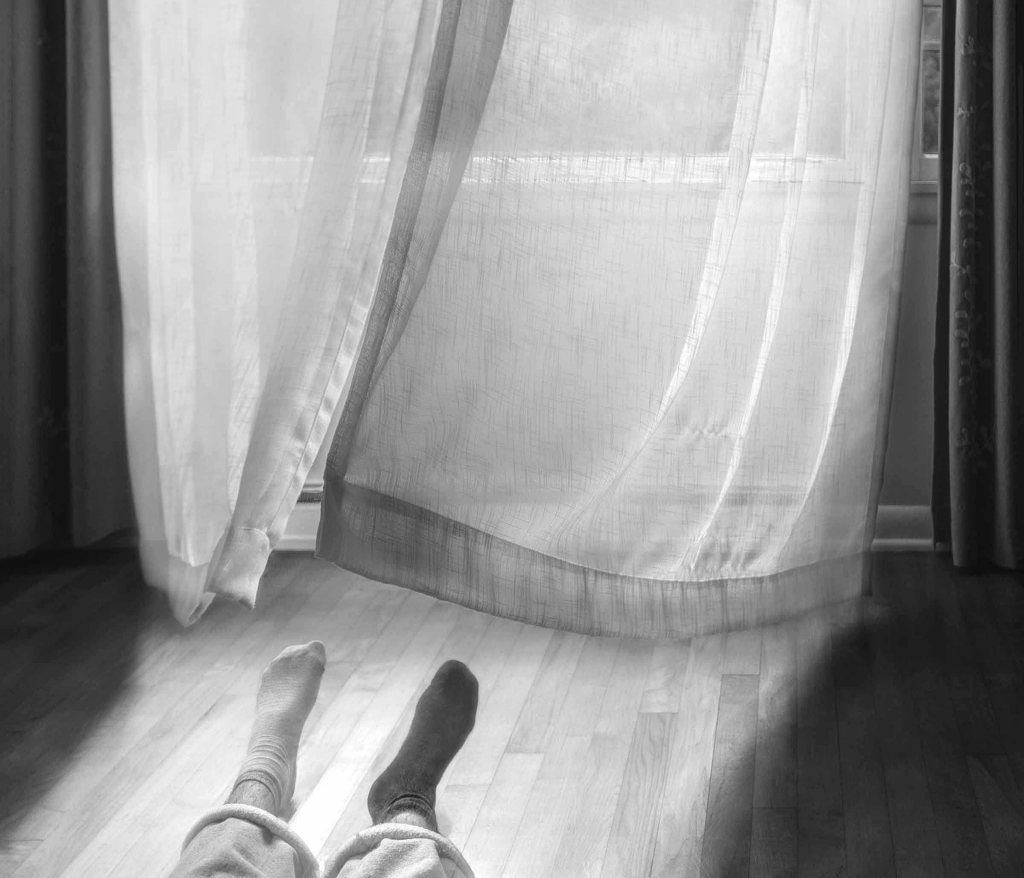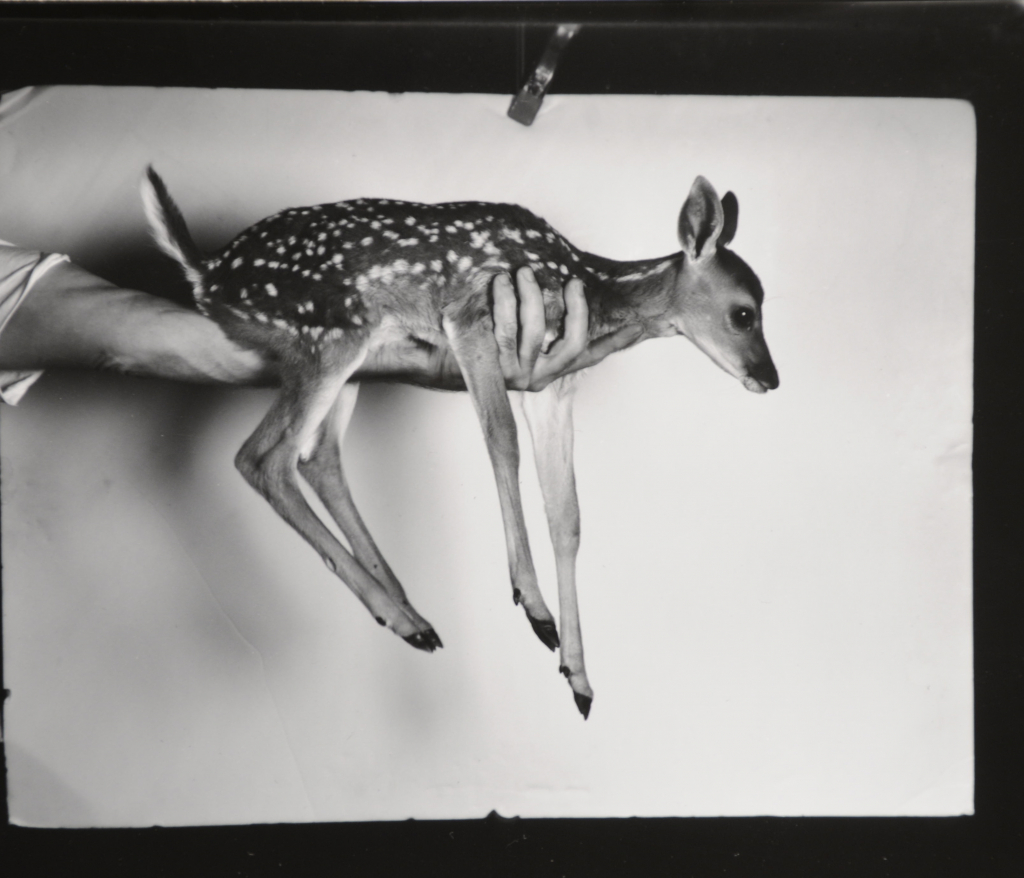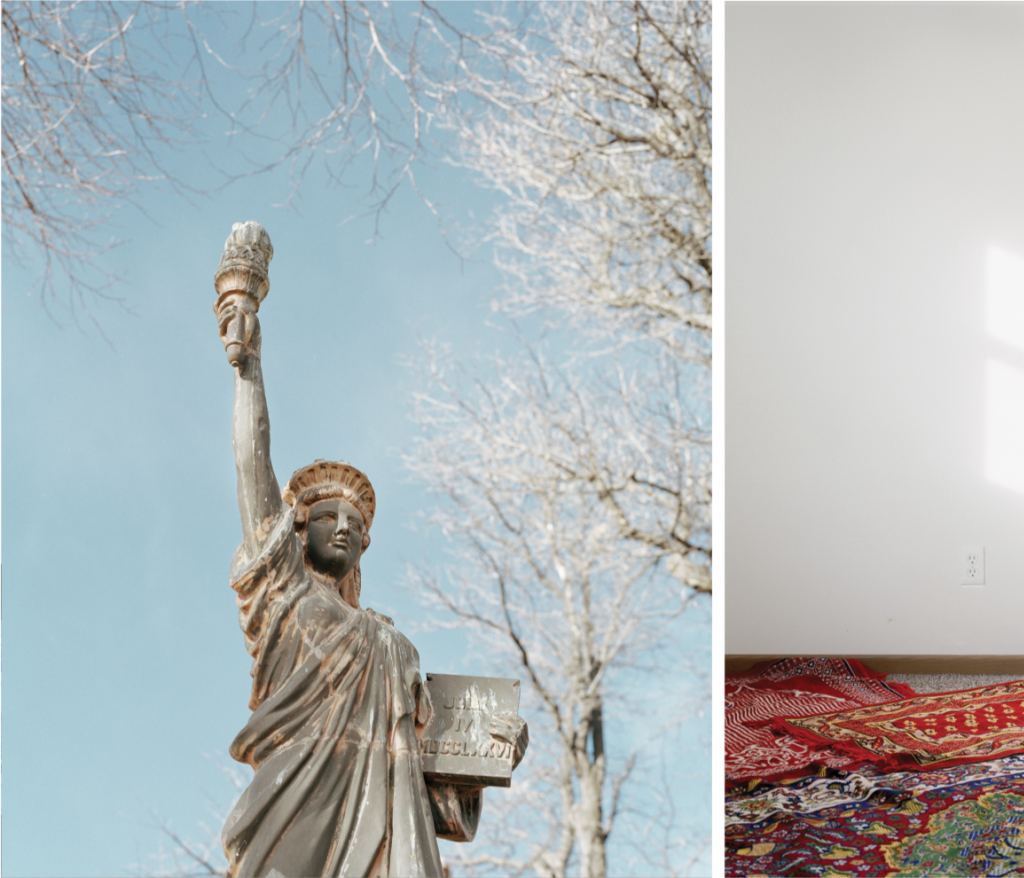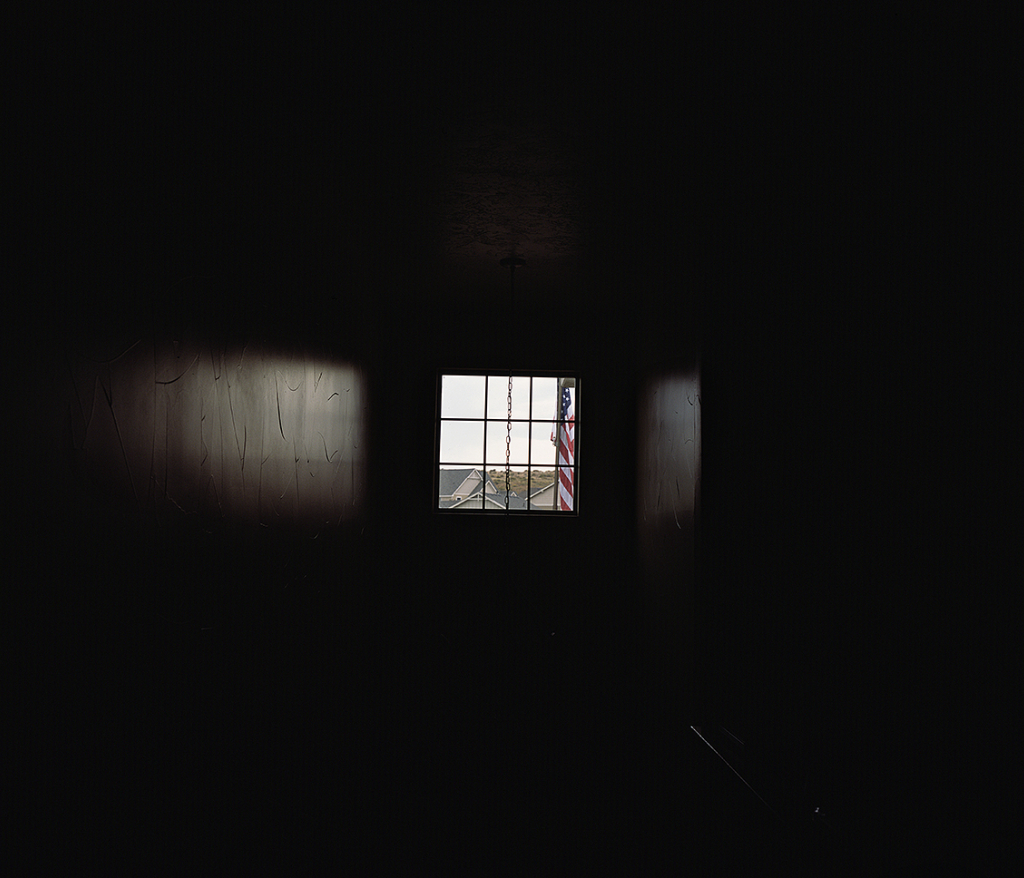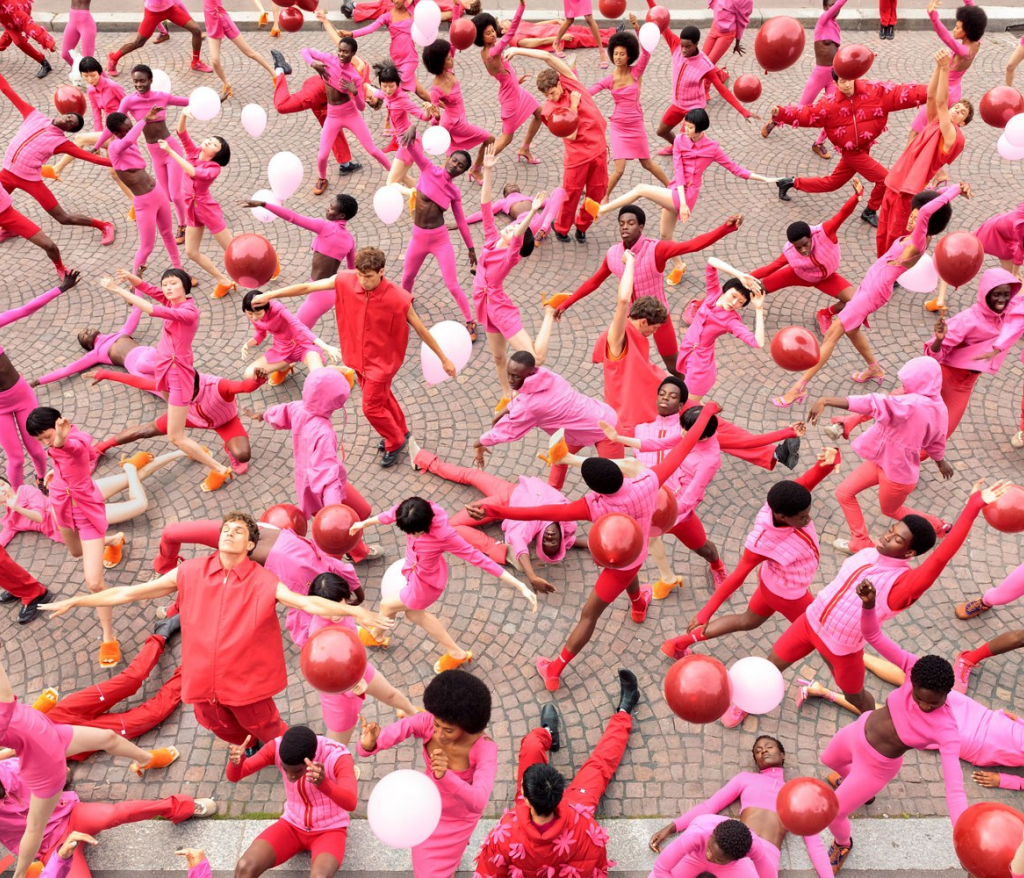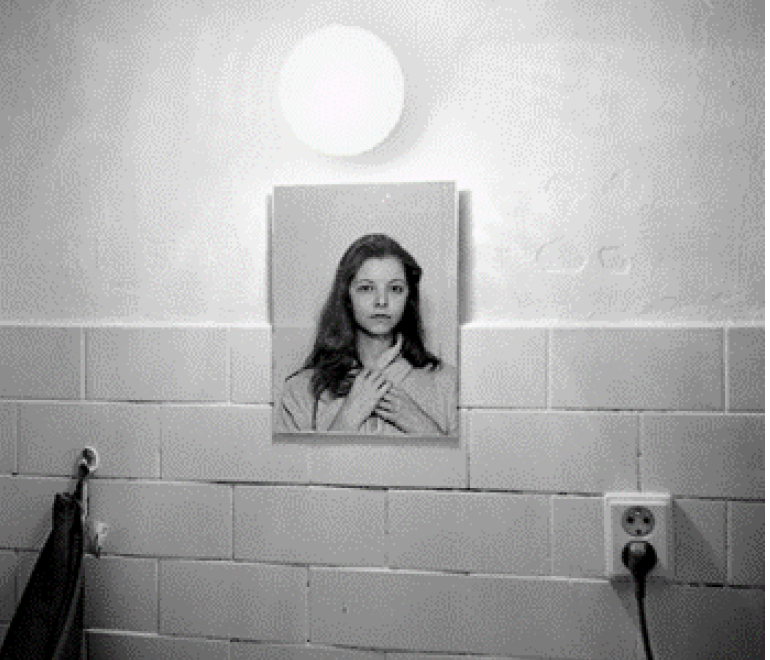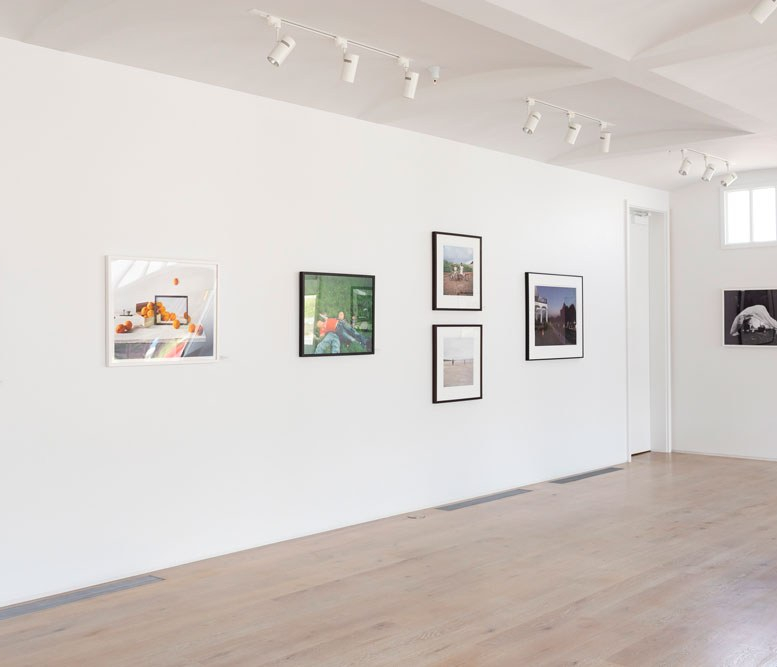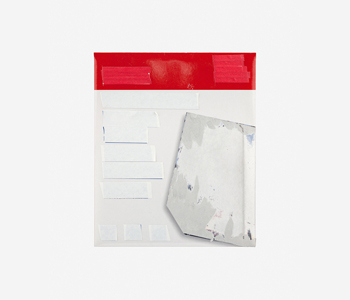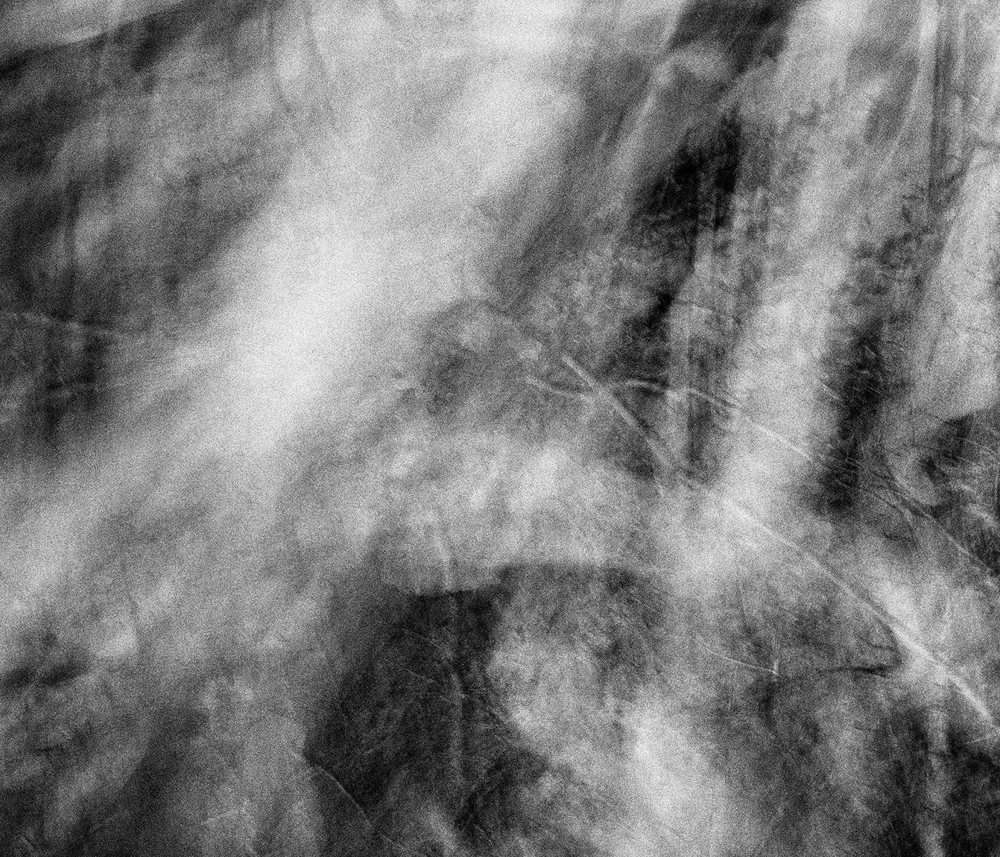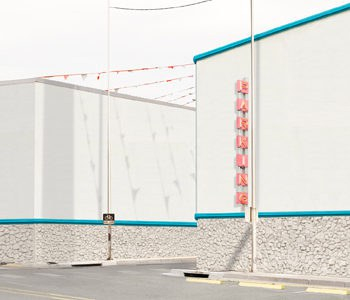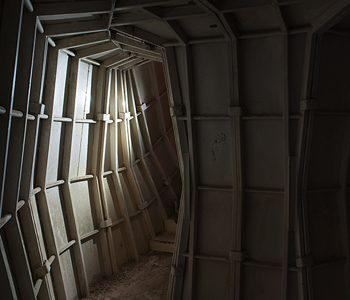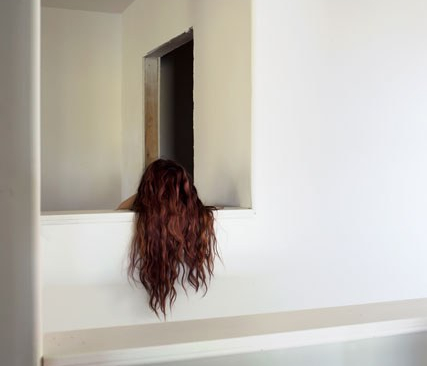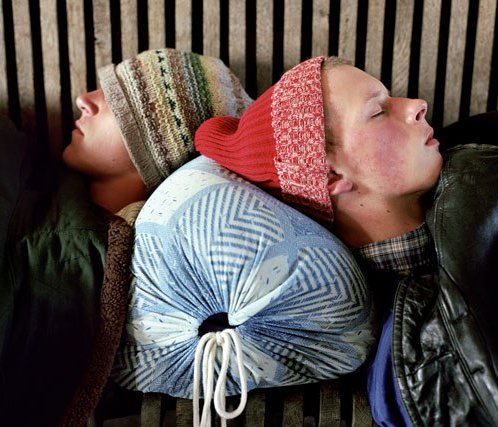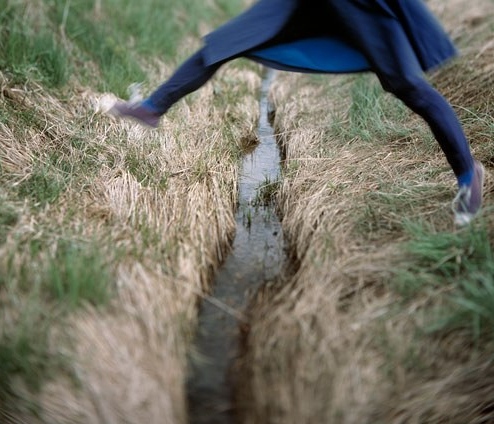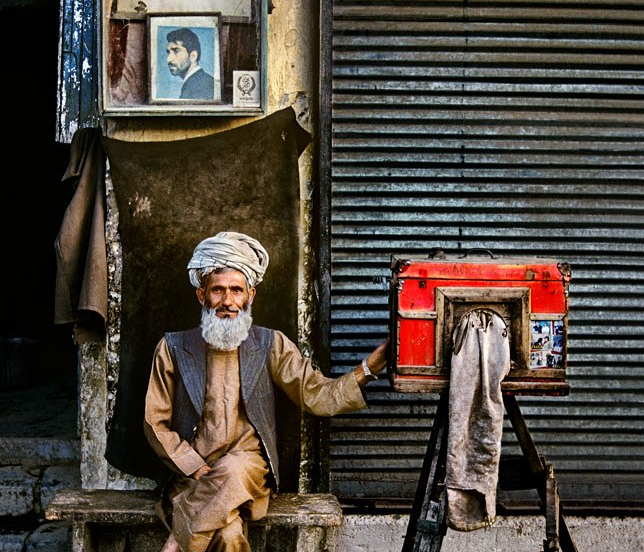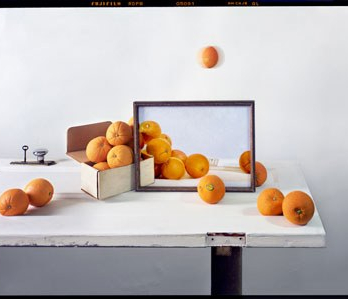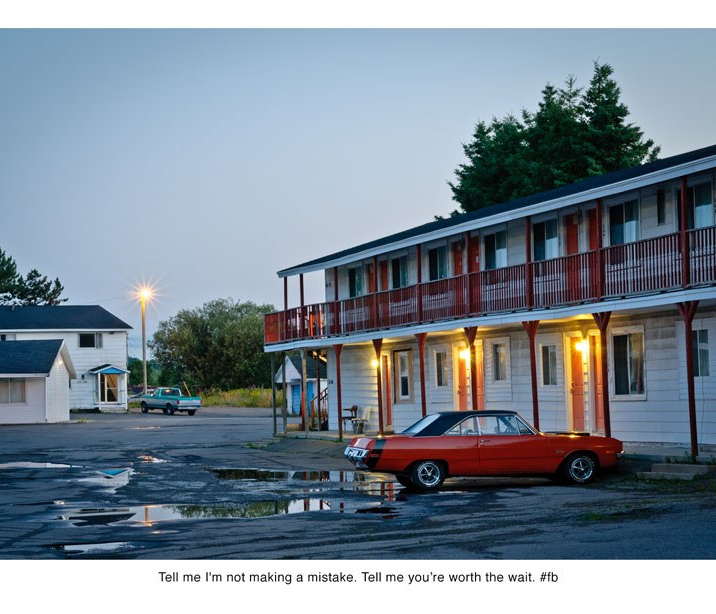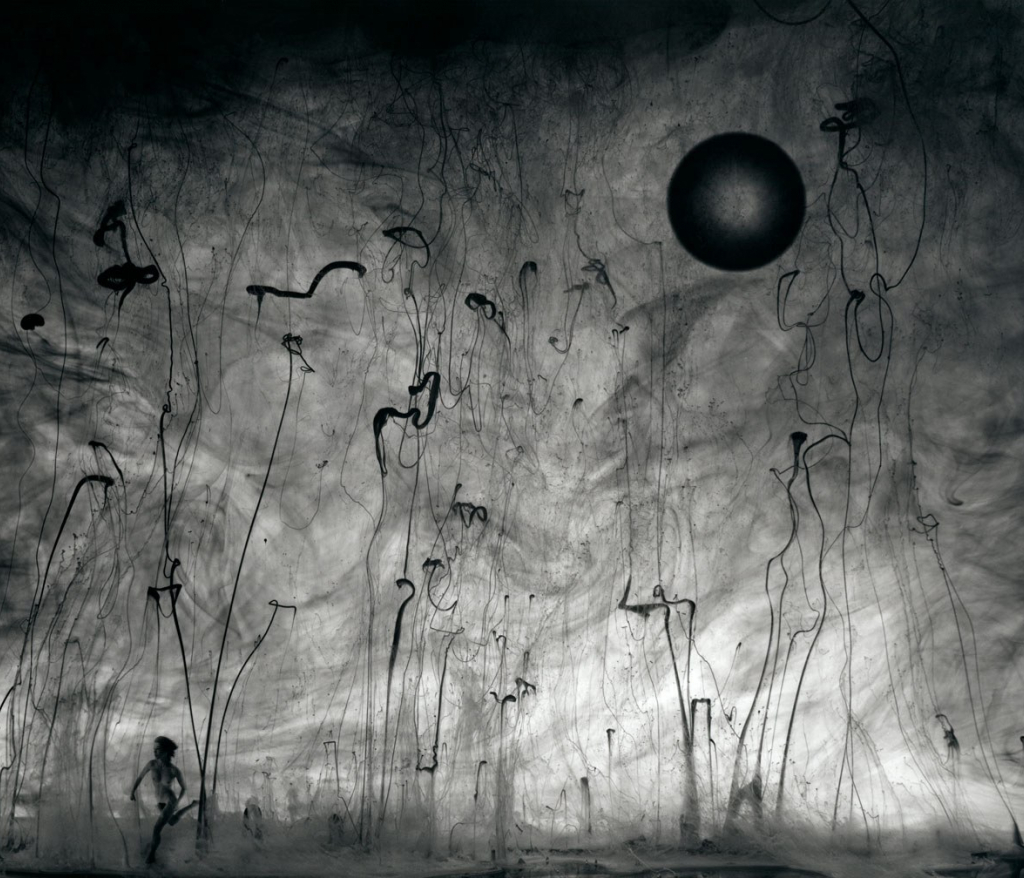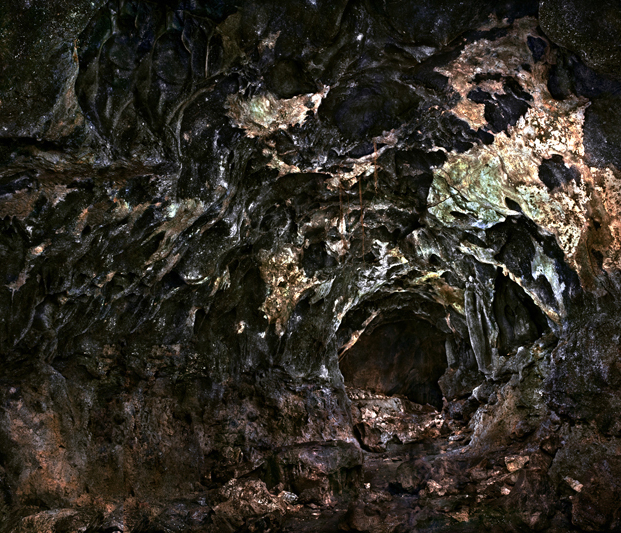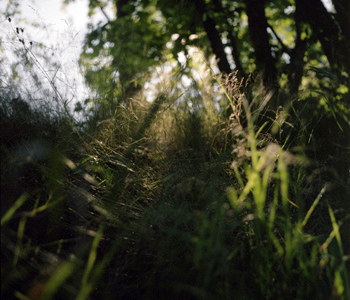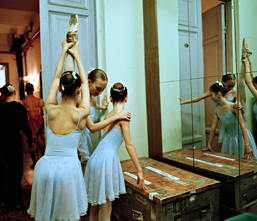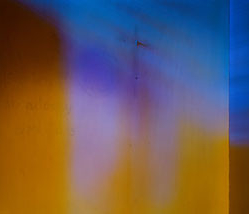S. Billie Mandle & Tara Cronin
S. Billie Mandle & Tara Cronin
S. Billie Mandle | Reconciliation
Abstraction lends a sense of mystery to what would otherwise be a plain, recognizable room. Swaths of light and thoughtfully composed shapes concentrate the viewer into the materiality of the space. A surface such as particle board seems to take on an almost absorptive quality — the holes, tiny receptacles for words.As the viewer is faced with a dark void, primary colors emerge. In Saint Joseph, a yellow panel is illumined as if from inside a prison where this is the phone line out. In Saint Francis, red curtains offer opulence in the midst of decay.And everywhere holes appear. Even as the viewer is pressed directly against the wall, the wall begins to breathe. These small visual conduits and the substantial quantity of darkness are containers for the communication of repentance.In these dark rooms, Mandle patiently allows the light to materialize in the image. The beauty beneath the surface is surprisingly lush; colors in the shadows of St. Christopher glow like the Northern Lights
Tara Cronin | T is for Transition
Cronin examines three elemental materials, isolated and magnified until their familiar form is invisible and their inherent structure revealed. Cronin finds in this abstraction a uniting bond between all material and so all things.Yet, in taking a slice, a moment, and investigating it so thoroughly one also magnifies its uniqueness. Pattern is consistent, but its details are ever-changing and dramatic.Cronin’s lens is a microscope, literally and metaphorically, illuminating a world united in abstraction, in beauty, and yet infinitely variable. A world in which every leaf, every person, is equally worthy of contemplation, in which every object, moment, and experience is an opportunity for artistic reverie. One only needs to look closely to discover this is our world.– Nathan Brewer
Billie Mandle photographs the intersection of people, their environments and beliefs – focusing on the spaces where life and ideologies coalesce. She received her MFA from Massachusetts College of Art and Design in 2008 and majored in biology and English at Williams College. She is a 2010 NYFA Fellow in photography, a Brooklyn Arts Council Individual Grant Recipient and was a finalist at the 25th Hyères Photography Festival. She is an assistant professor at Hampshire College.
Artist Statement | Reconciliation
These are photographs of confessionals, made from the perspective of the penitent. Using available light I abstract the small rooms – looking at the relationship between the tangible structure of the confessional and the intangible ritual of the space.– S. Billie Mandle
Tara Cronin is an artist working in various mediums focusing on alternative photographic methods, works on paper, installation and book-arts. She has pursued an art career that has both helped her solve problems in her own internal space as well as in the space she finds herself situated externally. Tara received a BA in Writing from New School University, and an MFA in Photography from Bard College and the ICP-Bard Program, and has Twice-earned the ICP Director’s Fellowship Award.
During her graduate and post-graduate work, Tara explored this interface between the material and the individual by making photographically-based work involving images or prints combined with materials such as reconstituted hemoglobin and chlorophyllin as well as with dust and with liquid metals. She holds various co-patents with partner and scientist Ed Chen including one on a unique polymer made from those materials used in her artwork, which after scientific research demonstrated itself to be the first synthetic membrane able to remove CO2 directly from air and convert it into useful liquids. This resulted in a solo show in the Museo de la Ciudad in Querétaro, Mexico in 2012, and later an invitation to be a guest-speaker and exhibition participant at the American Association for the Advancement of Science in Washington DC. Having exhibited throughout New York City, North America and Internationally, Tara's most recent exhibitions include participation in the MT. ROKKO PHOTO FESTIVAL in Kobe, Japan, and a 6-person exhibition with PHOTO DISTRICT NEWS at Foley Gallery in New York, NY.
Through working with the methods she does, Tara also works entrepreneurially and hopes to promote the idea of Science and Art as being symbiotic. Tara has worked on multiple startups with partner and scientist Ed Chen attempting to transform traditional skepticism of climate change through their technologies, while also promoting the relevance of Art and Science. Tara and Ed recently embarked on piloting their agricultural technology on the oldest certified Organic coffee farm in Kona Hawai'i in Summer 2015 and Tara is proud to be two years into her experience as a junior-master-roaster. You can find their farm and coffee at Rooster Farms. In Fall 2014 Tara released the books of three artists co-published with Schilt Publishing and with Magical Thinking Publications, an arts-publication and education organization she co-founded with business partner and artist Joshua Lutz.
Tara also hosted her co-founded project of the "Fred Talks - Ted Talks with Friends" for a number of years; a monthly lecture series amongst neighbors and peers that includes discussions on the arts, sciences, and any topic in between. She is happy and grateful to have joined the Board of Directors at SKEA, Society for Kona's Education & Art, in 2016 in Kona, HI.
Tara is nomadic, working primarily between New York City, New Jersey, and Hawaii in the United States.
Artist Statement | T is for Transition
I am interested in the things that separate, connect and overlap between people. Exploring the Life-Forces, the Bloods of various entities, is one concrete place for me to begin understanding. I am currently finding ways to scan galinstan, a liquid metal. This I see as the blood of the earth, while chlorophyll is the blood of trees and flora. My own blood is that of humans, just one part of the sum.Beneath psychological developments and digging, beneath social interactions between each of us and their implications, there exists a Rhythm that courses forth because it is simply the way of things anatomically, biologically.
S. Billie Mandle & Tara Cronin
S. Billie Mandle | Reconciliation
Abstraction lends a sense of mystery to what would otherwise be a plain, recognizable room. Swaths of light and thoughtfully composed shapes concentrate the viewer into the materiality of the space. A surface such as particle board seems to take on an almost absorptive quality — the holes, tiny receptacles for words.As the viewer is faced with a dark void, primary colors emerge. In Saint Joseph, a yellow panel is illumined as if from inside a prison where this is the phone line out. In Saint Francis, red curtains offer opulence in the midst of decay.And everywhere holes appear. Even as the viewer is pressed directly against the wall, the wall begins to breathe. These small visual conduits and the substantial quantity of darkness are containers for the communication of repentance.In these dark rooms, Mandle patiently allows the light to materialize in the image. The beauty beneath the surface is surprisingly lush; colors in the shadows of St. Christopher glow like the Northern Lights
Tara Cronin | T is for Transition
Cronin examines three elemental materials, isolated and magnified until their familiar form is invisible and their inherent structure revealed. Cronin finds in this abstraction a uniting bond between all material and so all things.Yet, in taking a slice, a moment, and investigating it so thoroughly one also magnifies its uniqueness. Pattern is consistent, but its details are ever-changing and dramatic.Cronin’s lens is a microscope, literally and metaphorically, illuminating a world united in abstraction, in beauty, and yet infinitely variable. A world in which every leaf, every person, is equally worthy of contemplation, in which every object, moment, and experience is an opportunity for artistic reverie. One only needs to look closely to discover this is our world.– Nathan Brewer
Billie Mandle photographs the intersection of people, their environments and beliefs – focusing on the spaces where life and ideologies coalesce. She received her MFA from Massachusetts College of Art and Design in 2008 and majored in biology and English at Williams College. She is a 2010 NYFA Fellow in photography, a Brooklyn Arts Council Individual Grant Recipient and was a finalist at the 25th Hyères Photography Festival. She is an assistant professor at Hampshire College.
Artist Statement | Reconciliation
These are photographs of confessionals, made from the perspective of the penitent. Using available light I abstract the small rooms – looking at the relationship between the tangible structure of the confessional and the intangible ritual of the space.– S. Billie Mandle
Tara Cronin is an artist working in various mediums focusing on alternative photographic methods, works on paper, installation and book-arts. She has pursued an art career that has both helped her solve problems in her own internal space as well as in the space she finds herself situated externally. Tara received a BA in Writing from New School University, and an MFA in Photography from Bard College and the ICP-Bard Program, and has Twice-earned the ICP Director’s Fellowship Award.
During her graduate and post-graduate work, Tara explored this interface between the material and the individual by making photographically-based work involving images or prints combined with materials such as reconstituted hemoglobin and chlorophyllin as well as with dust and with liquid metals. She holds various co-patents with partner and scientist Ed Chen including one on a unique polymer made from those materials used in her artwork, which after scientific research demonstrated itself to be the first synthetic membrane able to remove CO2 directly from air and convert it into useful liquids. This resulted in a solo show in the Museo de la Ciudad in Querétaro, Mexico in 2012, and later an invitation to be a guest-speaker and exhibition participant at the American Association for the Advancement of Science in Washington DC. Having exhibited throughout New York City, North America and Internationally, Tara's most recent exhibitions include participation in the MT. ROKKO PHOTO FESTIVAL in Kobe, Japan, and a 6-person exhibition with PHOTO DISTRICT NEWS at Foley Gallery in New York, NY.
Through working with the methods she does, Tara also works entrepreneurially and hopes to promote the idea of Science and Art as being symbiotic. Tara has worked on multiple startups with partner and scientist Ed Chen attempting to transform traditional skepticism of climate change through their technologies, while also promoting the relevance of Art and Science. Tara and Ed recently embarked on piloting their agricultural technology on the oldest certified Organic coffee farm in Kona Hawai'i in Summer 2015 and Tara is proud to be two years into her experience as a junior-master-roaster. You can find their farm and coffee at Rooster Farms. In Fall 2014 Tara released the books of three artists co-published with Schilt Publishing and with Magical Thinking Publications, an arts-publication and education organization she co-founded with business partner and artist Joshua Lutz.
Tara also hosted her co-founded project of the "Fred Talks - Ted Talks with Friends" for a number of years; a monthly lecture series amongst neighbors and peers that includes discussions on the arts, sciences, and any topic in between. She is happy and grateful to have joined the Board of Directors at SKEA, Society for Kona's Education & Art, in 2016 in Kona, HI.
Tara is nomadic, working primarily between New York City, New Jersey, and Hawaii in the United States.
Artist Statement | T is for Transition
I am interested in the things that separate, connect and overlap between people. Exploring the Life-Forces, the Bloods of various entities, is one concrete place for me to begin understanding. I am currently finding ways to scan galinstan, a liquid metal. This I see as the blood of the earth, while chlorophyll is the blood of trees and flora. My own blood is that of humans, just one part of the sum.Beneath psychological developments and digging, beneath social interactions between each of us and their implications, there exists a Rhythm that courses forth because it is simply the way of things anatomically, biologically.
